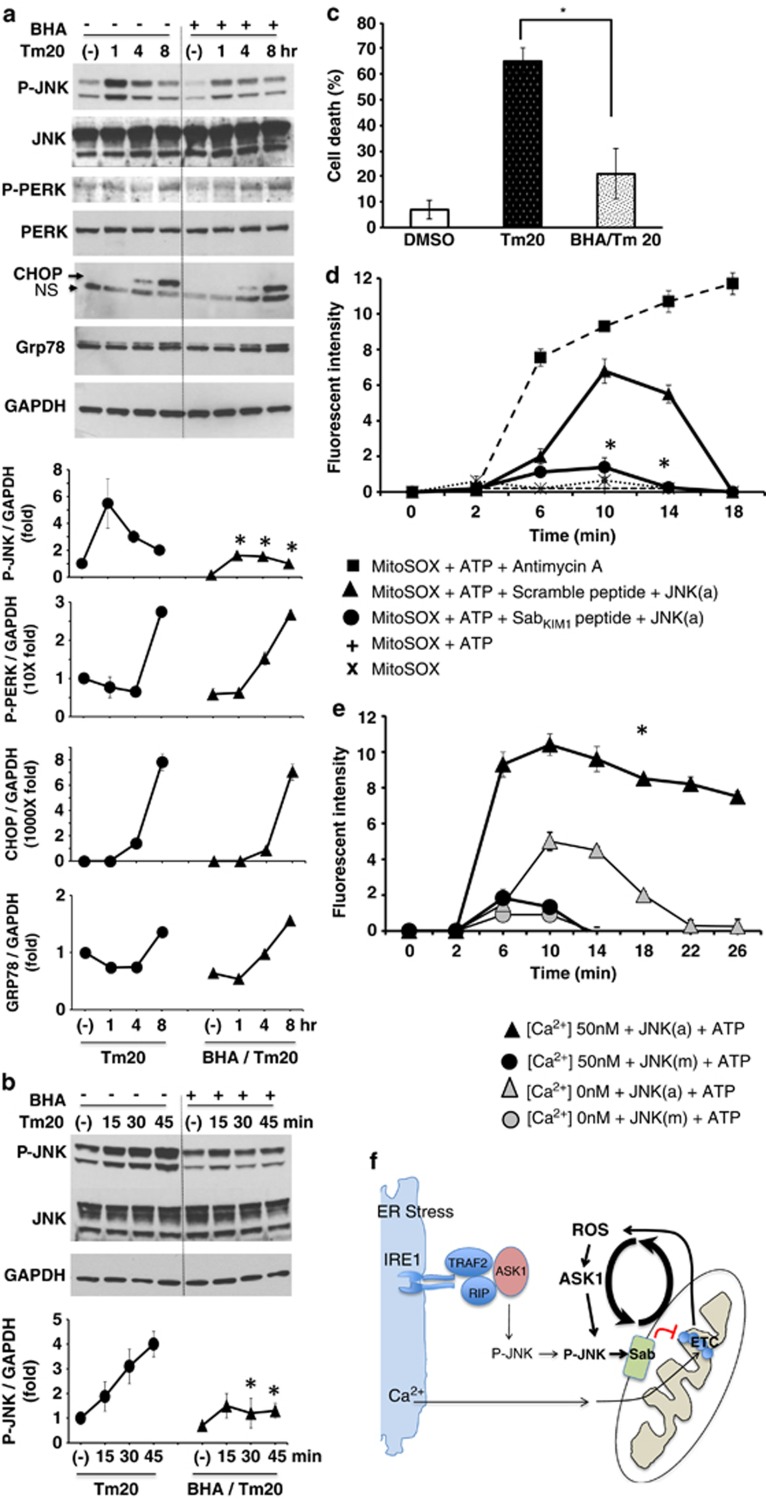Figure 4.
Effect of antioxidant BHA on ER stress induced JNK activation and effect of activated JNK on mitochondrial ROS production. (a) Sustained JNK activation (1–8 h) was inhibited by BHA 100 μM preincubation before tunicamycin treatment. Induction of P-PERK, CHOP, and GRP78 expression were not changed by BHA preincubation; *P<0.05 versus vehicle control without BHA, N=3 experiments. (b) BHA suppressed JNK activation at 30 and 45 min after tunicamycin treatment but not at 15 min (initial activation). (c) BHA prevented tunicamycin-induced cell death; *P<0.01 versus Tm20, N=3 experiments. (d) SabKIM1 peptide blocks superoxide (O2•−) produced from mitochondria. To wild type isolated mitochondria (20 μg) in respiration buffer with pyruvate/malate, premixed 10 ng recombinant active P-JNK (JNK(a)), ATP and control scrambled peptide or SabKIM1 peptide 10 μM with MitoSOX (Invitrogen) was added. Superoxide (O2•−) produced from isolated mitochondria at unstimulated basal (state II) respiration was measured intermittently by Omega fluorescence microplate reader. SabKIM1 peptide blocked superoxide (O2•−) production. The data are presented as means±S.D. of five wells of each sample for each experiment; *P<0.01 (scrambled versus KIM1 peptide), N=5 experiments. Antimycin A, as a positive control, induced superoxide (O2•−) production, which was not inhibited by KIM1 peptide (not shown). Fluorescence intensity represents the difference between absence and presence of FeTCPP (SOD mimetic). ATP or JNK(a) alone did not significantly increase ROS (not shown). (e) [Ca2+] enhanced the intensity and duration of production of mitochondrial superoxide (O2•−) by activated JNK (JNK(a)). Inactive JNK (JNK(m)) with or without ATP did not increase ROS. (See also Supplementary Figures S3 and S4). (f) Model of the role of JNK, Sab, Ca2+ and ROS in the interplay of ER stress and mitochondria in sustained JNK activation

